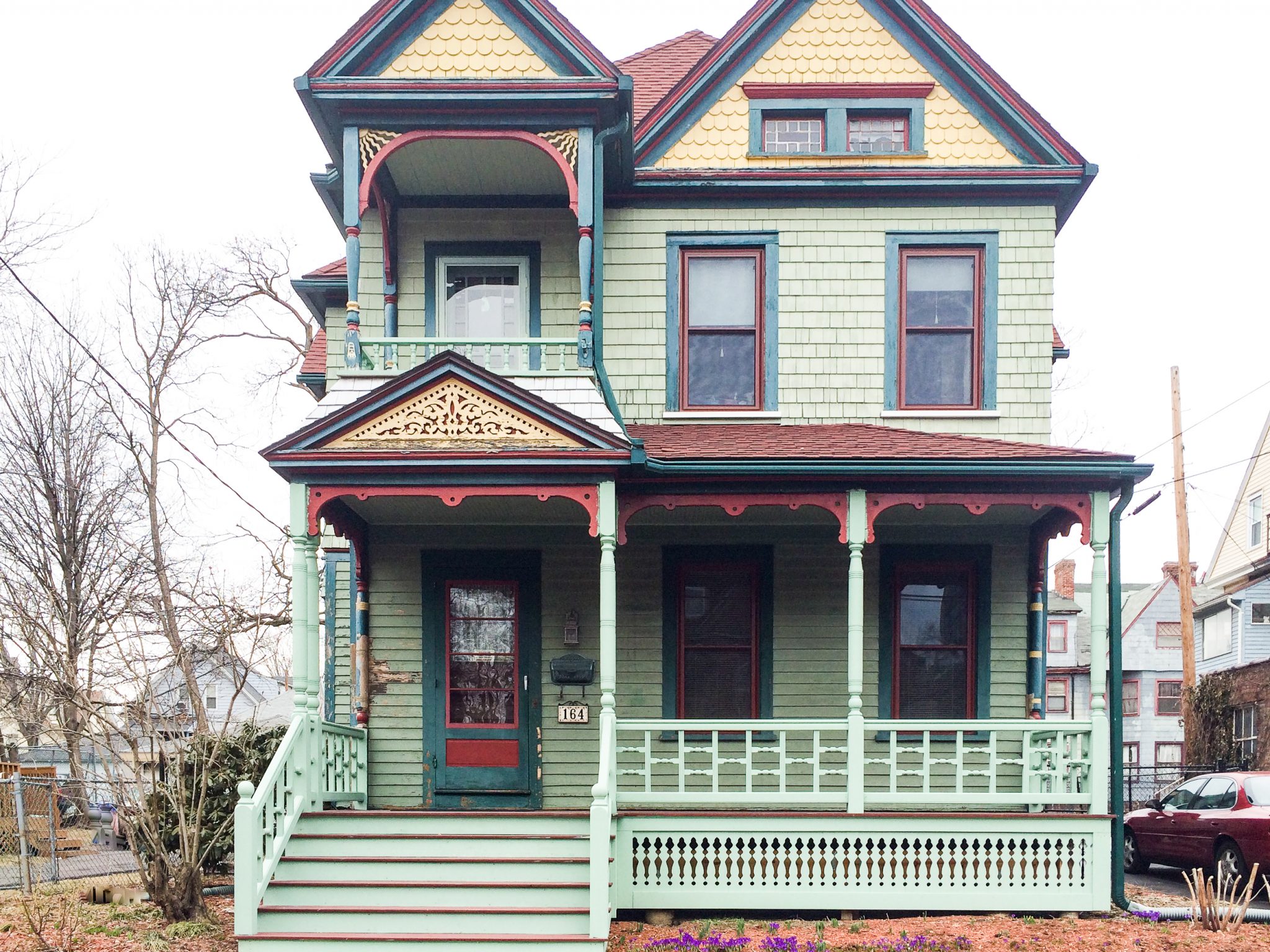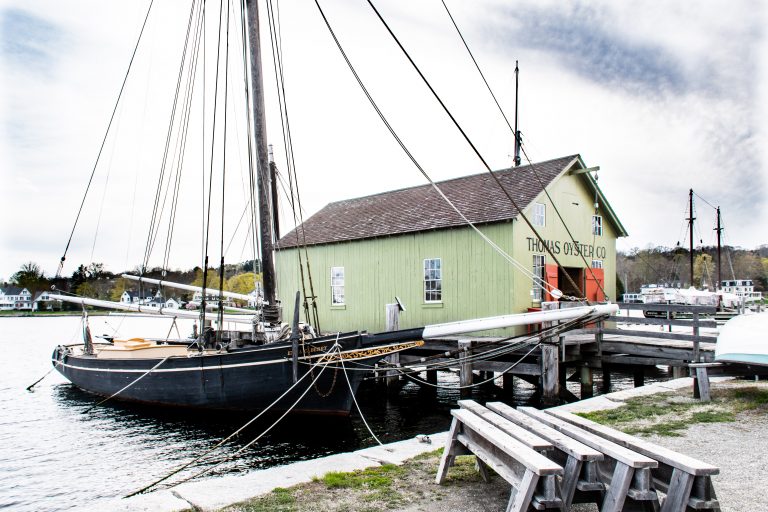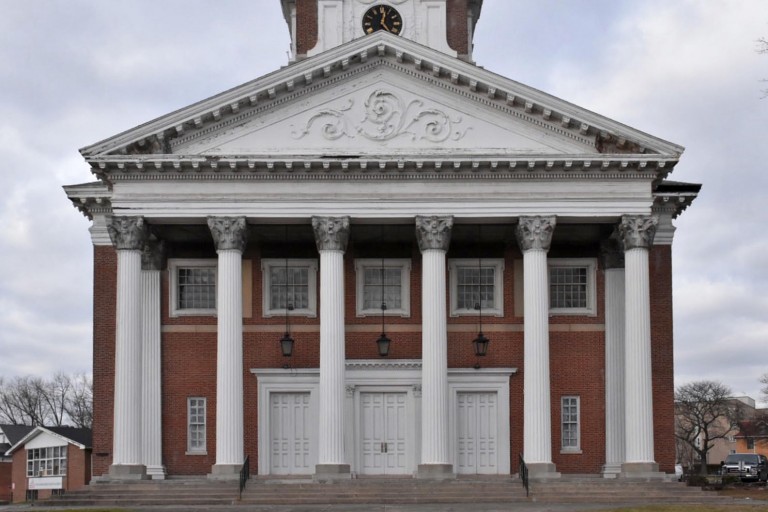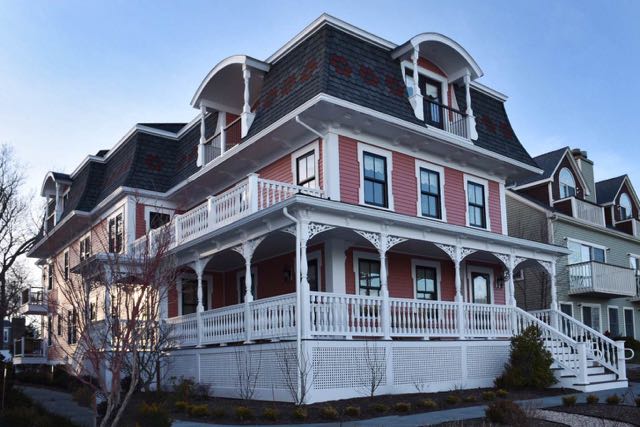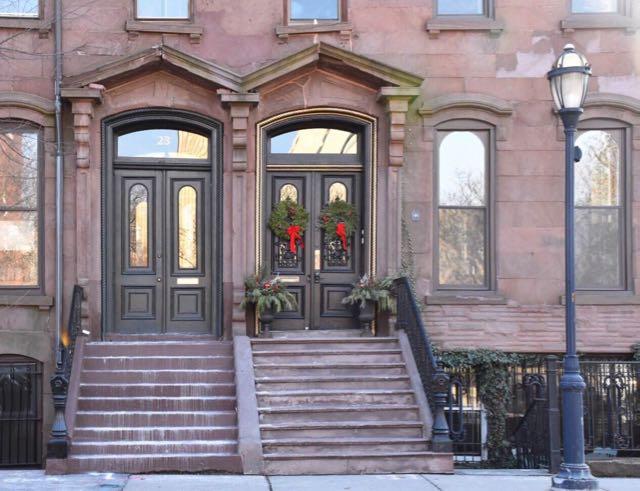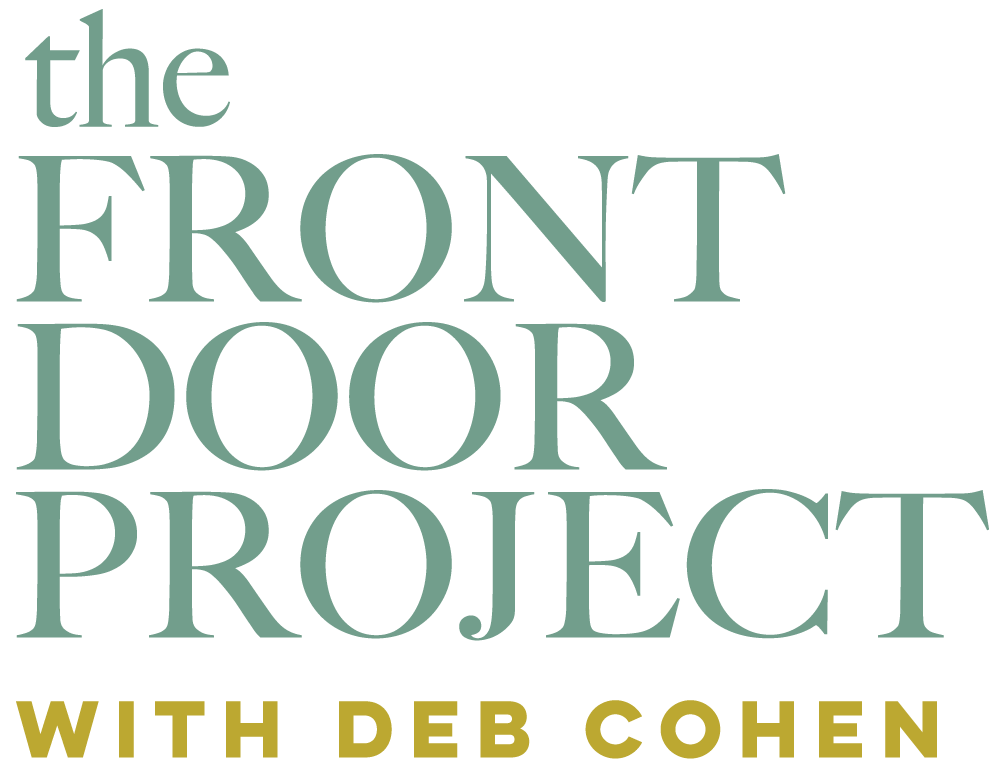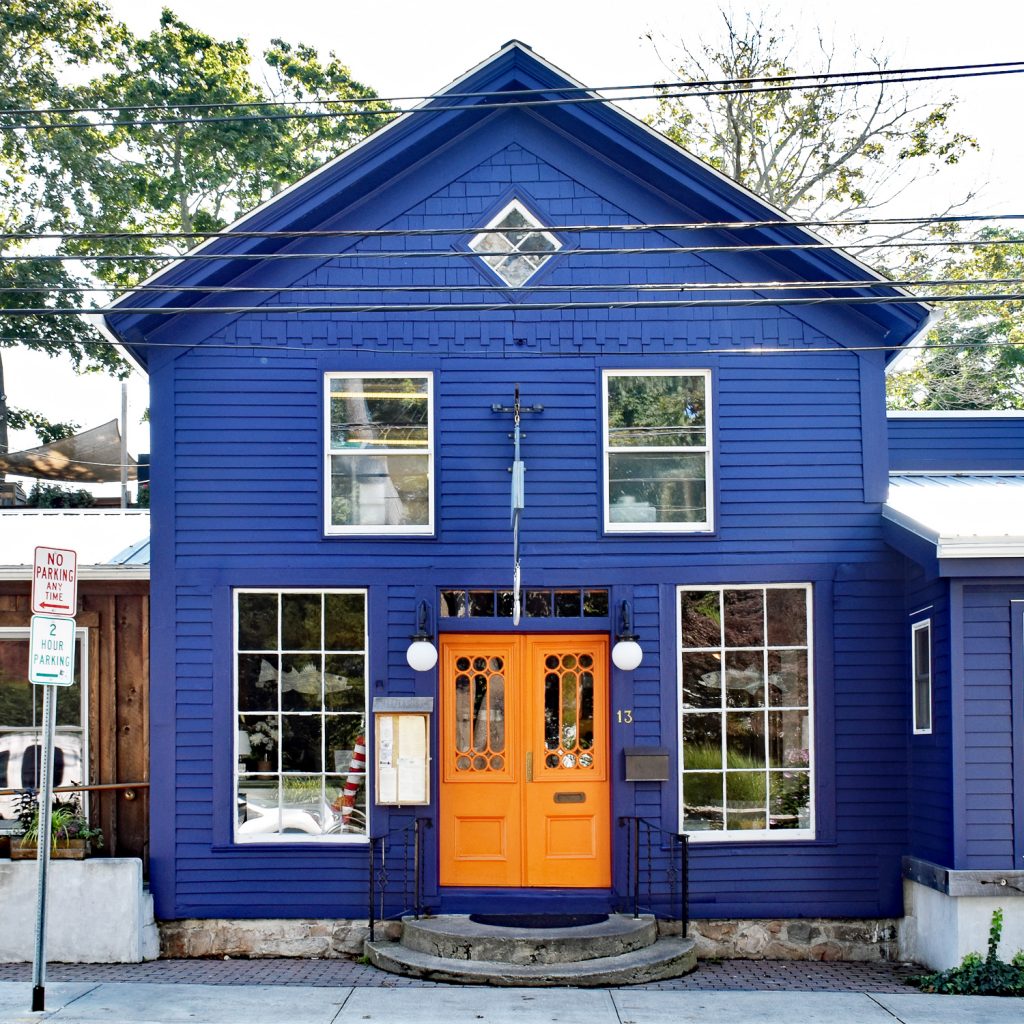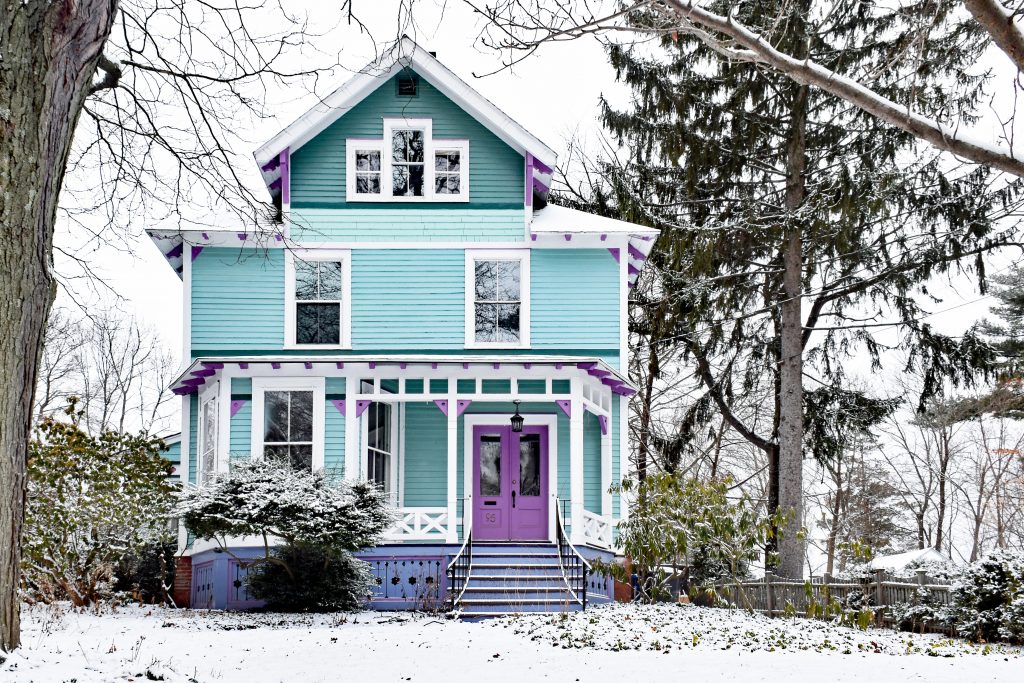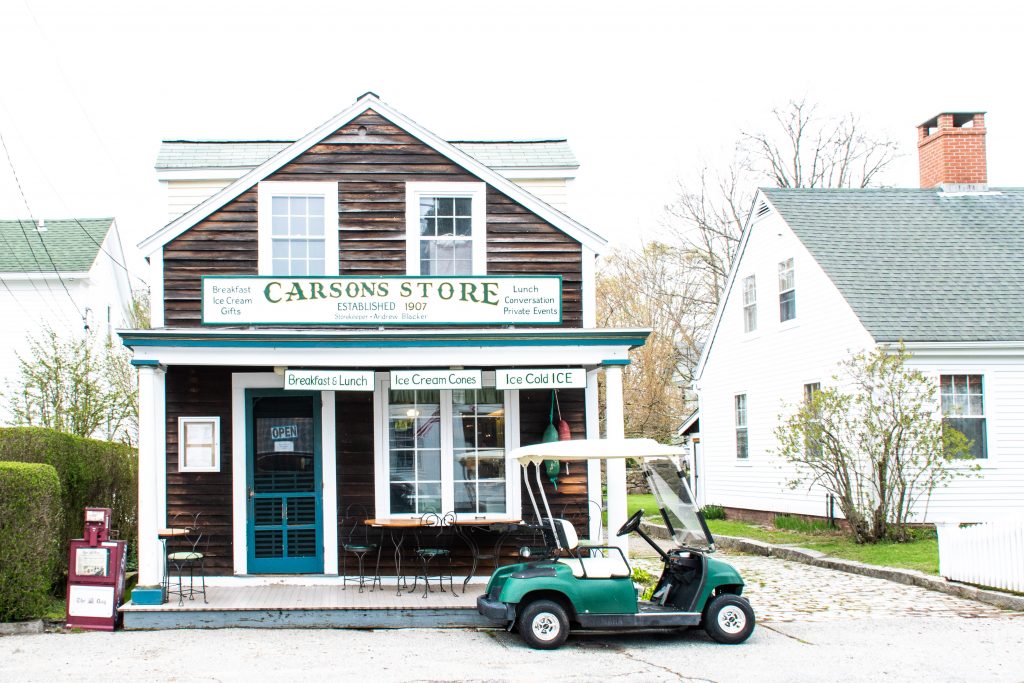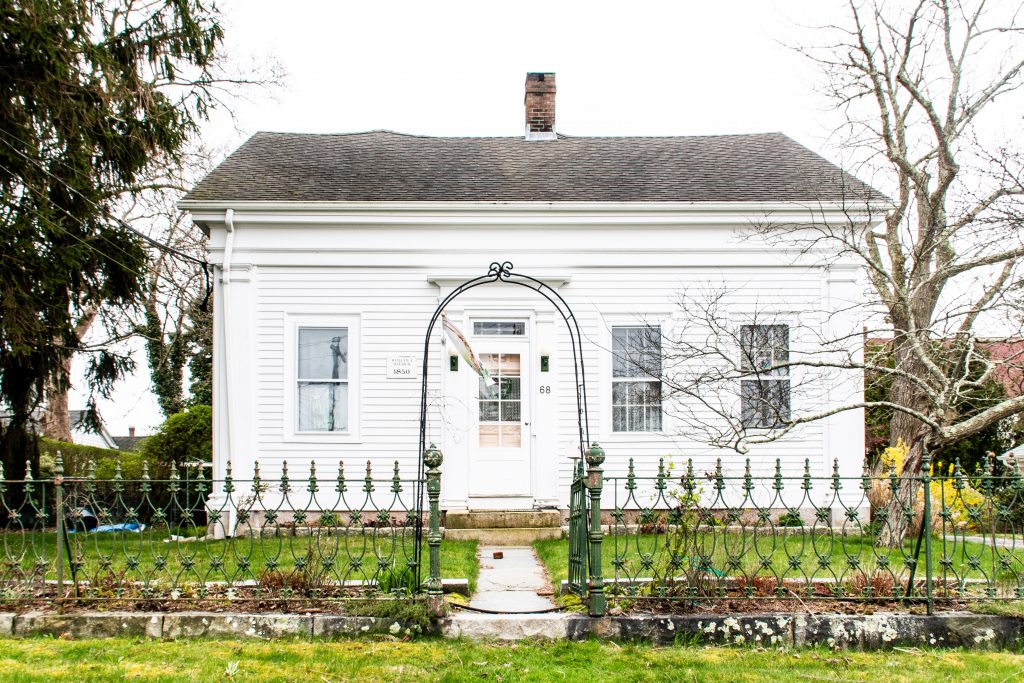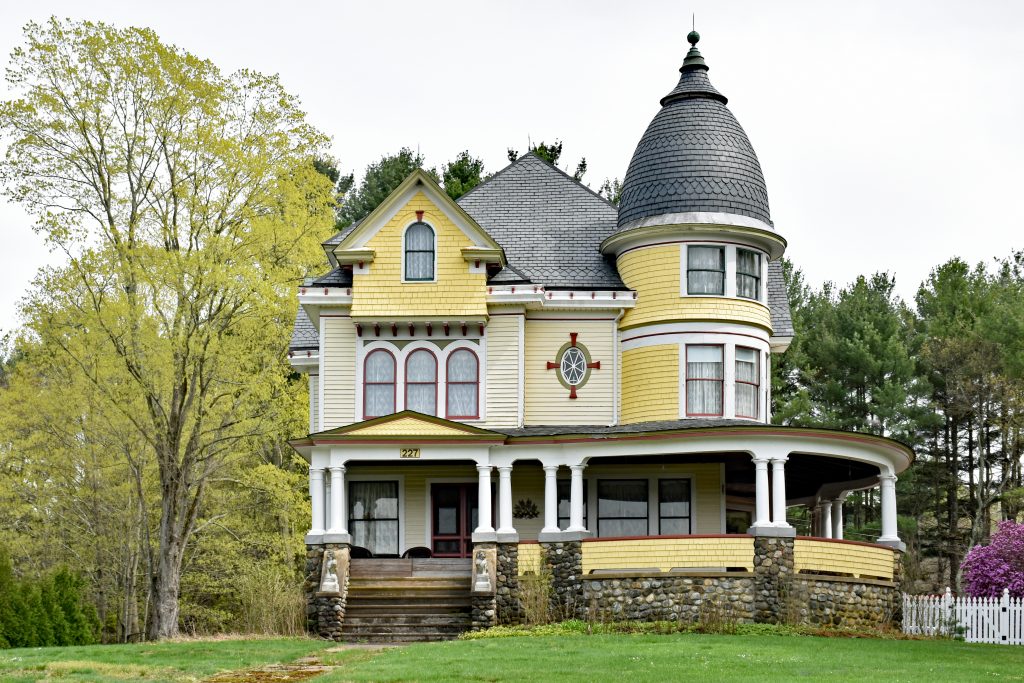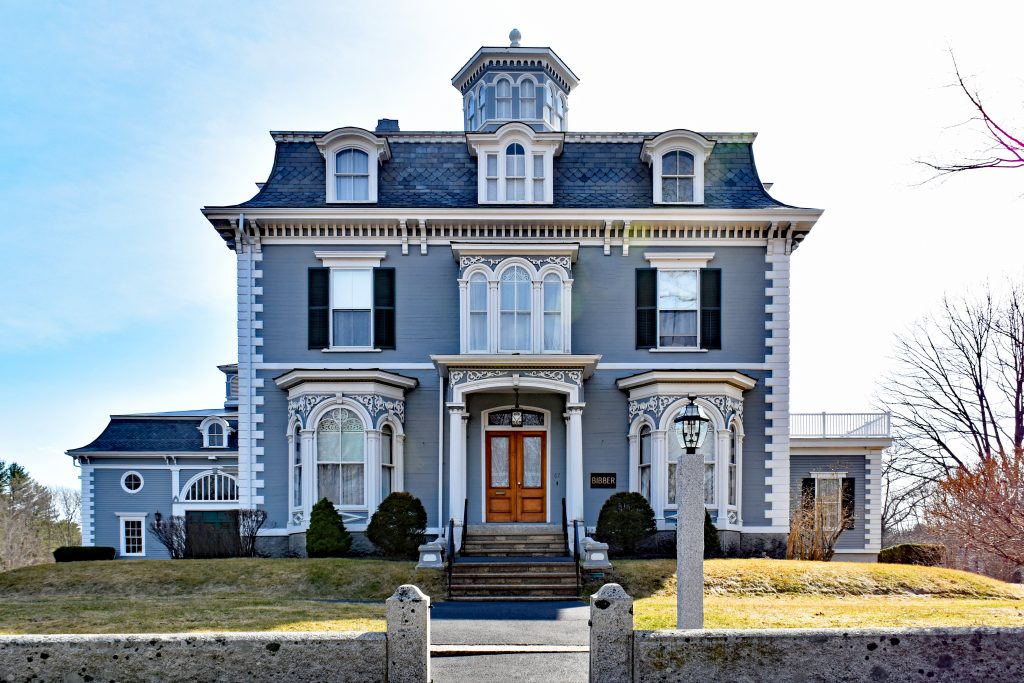What do you know about Asylum Hill, one of Hartford, CT’s many neighborhoods? Take a virtual tour with me, and learn just enough to be impress your friends!
Some Basic Asylum Hill History
Asylum Hill (initially called Lords Hill), a neighborhood west of Hartford, was once farmland named after Captain Richard Lord, a prominent early settler of Hartford. In 1817 the Asylum for the Education and Instruction of Deaf and Dumb Persons was founded and its first student, Alice Cogswell, was enrolled. The street where the school was located was named Asylum Street, and from that point forward the area was known as Asylum Hill.

Alice’s father Mason Cogswell, a wealthy surgeon, searched to find solutions to help his daughter and approximately 80 other deaf children from New England. His fundraising efforts and collaborations with others, including Thomas
A statue of Alice donated by the National Association of the Deaf commemorates the first permanent school dedicated to educating deaf students, though the school has since moved to West Hartford and is now known as the American School for the Deaf.

In the mid-1800s, parcels of farmland in the area were purchased by Thomas Hooker and Francis Gillette for real estate development. They built their own homes there and encouraged others to join them, ultimately resulting in the area known as Nook Farm, a “tightly knit community of intellectuals, political leaders, and reformers who together and individually wielded outsized influence on the country’s intellectual and social development” per Connecticut History.org.
Much of Nook Farm overlooked the Park River (also known as Hog River), portions of which were buried by the Army Corps of Engineers from the 1940s-1980s due to major flooding every spring. The river still runs underneath Hartford through concrete tunnels, eventually flowing into the Connecticut River.

Hartford also began building its reputation as the “Insurance Capital of the World” in 1810 when the Hartford Fire Insurance Company opened its doors in Asylum Hill. Aetna Life Insurance Company followed in 1853 with its iconic Colonial Revival building on Farmington

With prominent, wealthy families looking to move out of the center of Hartford, spacious architect-designed homes began sprouting up throughout Asylum Hill in a variety of styles, most notably Victorian. For decades the neighborhood’s residents were important, influential citizens of the city.
As housing needs for the expanding middle-class and single people grew, large numbers of these homes were demolished to make way for new apartment buildings and prominent families moved further away from downtown.

Clemens Place is just one of the apartment complexes developed in the area, comprised of 42 buildings, three to four stories tall. The buildings are designed in various architectural styles and utilize a variety of materials and provide quite a bit of interest from the street.
Important Asylum Hill Landmarks
In addition to the aforementioned Aetna and Hartford insurance companies, some other important Asylum Hill landmarks are:
- The Mark Twain House & Museum: Samuel Clemens, aka Mark Twain, made his home in Hartford from 1871 until 1903. He and his wife Livy rented a house on Forest Street in the Nook Farm neighborhood for the first few years and then commissioned a new home with New York architect Edward Tuckerman Potter to be built on property they purchased on Farmington Avenue, also in Nook Farm. Completed in 1874, the stunning Victorian Gothic home is open for tours daily. It is the most popular tourist attraction in Hartford and not to be missed!

- The Clemens family had well-known neighbors, with Harriet Beecher Stowe living right next door. An abolitionist and author, Stowe’s most famous work
is Uncle Tom’s Cabin. Her former home is now a historic house museum and a center for social justice.

- Also in Nook Farm right next to the Stowe House is the Katharine Seymour Day House. This grand example of Queen Anne architecture currently serves as administrative space and library for the Stowe Center. Katharine Seymour Day was a grandniece to Stowe and granddaughter of suffragist Isabella Beecher Hooker. She is credited with saving the Twain House from being razed, and she generously created and endowed the Stowe Center.

- A number of architecturally significant churches claim Asylum Hill as their neighborhood, including Asylum Hill Congregational Church, Trinity Episcopal Church, Saint Joseph’s Cathedral, and Immanuel Congregational Church. Each has stunning but dramatically different architectural features.

- The Town & County Club on Woodland Street is a private women’s club formed in 1925, just five years after women received the right to vote. It is located in the 1895 Theodore Lyman House and the club operates a foundation to preserve the house and grounds.

- Sigourney Square Park is the only public park in Asylum Hill. At just under three acres, it is an important gathering place for the local community. It was established in 1895 and is one square block with a simple “X” walkway connecting the four corners where arched entryways are located. The park and neighboring streets were designated as a National Historic District in 1979. I need to go back and photograph in the spring once things green up!

- The iconic chrome and steel Comet Diner, with its current name “Dishes”, sits on Farmington Avenue awaiting its fate. Escaping demolition in 2016, Hartford preservation advocates are hoping for a solution that would allow it to become the centerpiece of a revitalized Asylum Hill neighborhood.
- In 1897 the Sisters of Saint Joseph opened a two-room hospital in Asylum Hill as a refuge to new immigrants who wanted to know that their faith and traditions would be understood and respected. Today, Saint Francis Hospital and Medical Center is a massive, high-tech facility that is now New England’s largest Catholic hospital.
Asylum Hill Trivia
I love learning bits of trivia about a place, so here are a few tidbits I came across in my research:
- Noted American poet Wallace Stevens was a longtime resident of Hartford and worked the bulk of his career at the Hartford Accident and Indemnity Company, advancing to Vice President as he simultaneously wrote and published many of his most famous works. He won the Pulitzer Prize for Poetry in 1955.
- Ahern Funeral Home has been in operation since 1886, moving its downtown business to its current Farmington Avenue address in 1934. The Italianate style building is a good example of the type of building you might have seen in the mid-1800s in Asylum Hill. Ahern remains a family business and has served the greater Hartford area for three generations.

- Asylum Hill was home to the original Hartford Public High School, which was demolished in 1963 to make way for I-84. A stone marker honors the institution which opened in 1869. It was the second oldest secondary school in the country at the time.
- When Trinity Episcopal Church was built in the 1890s, church leadership decided to abandon the use of subscription pews which were labeled with an owner’s plaque. Individual chairs were used instead to welcome all as equals. Those chairs are still in place.
- The stag, or male deer, the symbol of Hartford Fire Insurance Company, was taken from the 16th-century seal of the town of Hertford in England from where the city of Hartford adopted its name. A male deer was referred to as a hart in medieval times, and “Hartford” is the ford where harts cross.
- The first pastor of Asylum Hill Congregational Church, Joseph Twichell, was a constant companion and advisor of Samuel Clemens. Twichell and Clemens used to take long walks to Talcott Mountain. You can see a tour at the Twain House with Twichell as your guide!
Asylum Hill Today
Today, the Asylum Hill neighborhood is in transition. While long-standing institutions such as insurance companies and museums continue to prosper, the residential areas of Asylum Hill are challenged.

Organizations like the Asylum Hill Neighborhood Association, composed of local citizens, and NINA (Northside Institutions Neighborhood Alliance) are working diligently to improve the quality of life in the neighborhood by focusing on reducing crime, developing business, and preserving historic architecture, among other important initiatives.
There are a significant number of small businesses and restaurants in the neighborhood which are within easy walking distance for residents and are frequented by local-area employees and commuters who travel both Farmington and Asylum Avenues to and from work.
While the Asylum Hill neighborhood and Hartford, in general, are challenged in many ways, one can see the beauty of yesteryear in the neighborhood and the existing potential for a brighter future. Local officials, organizations, and residents will need to work together to bring that future to fruition.
If you are passing through, take some time to stop in the Asylum Hill neighborhood and absorb the history and architecture. Visit a museum, eat at a local restaurant, or shop at a local business. Your support is crucial to the community!
Please note that as an Amazon Associate, I earn from qualifying purchases at no additional cost to you.
[x_author title=”About the Author”]
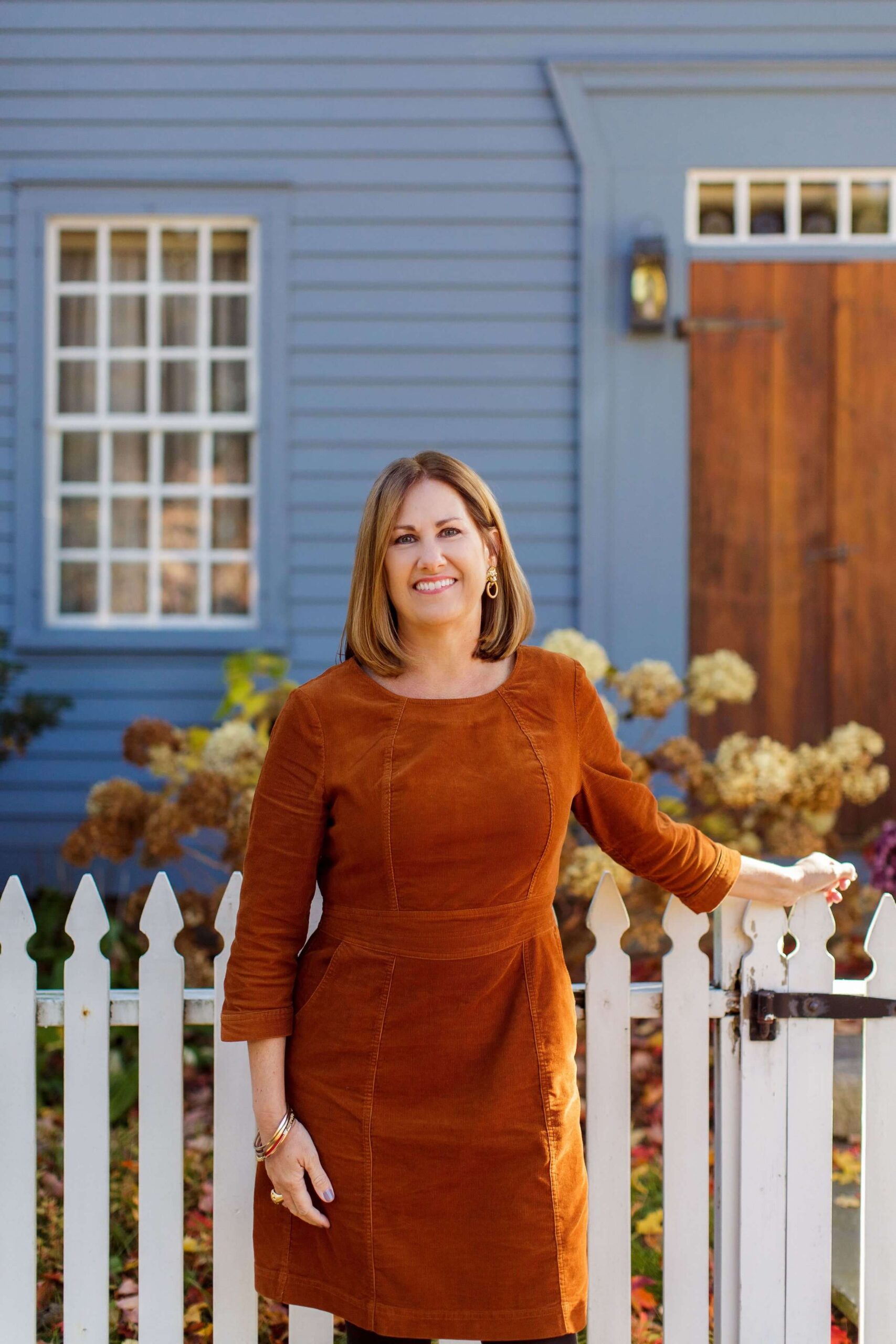
My name is Deb Cohen, and I am a lifelong resident of Connecticut, a lover of all things historic and New England, and a realtor who helps buyers and sellers achieve their real estate goals and dreams. When I’m not working, I enjoy life with my husband, our two adult children, and our two rescue pups. Renovating and decorating our historic home, dating to 1800, is another favorite pastime.
